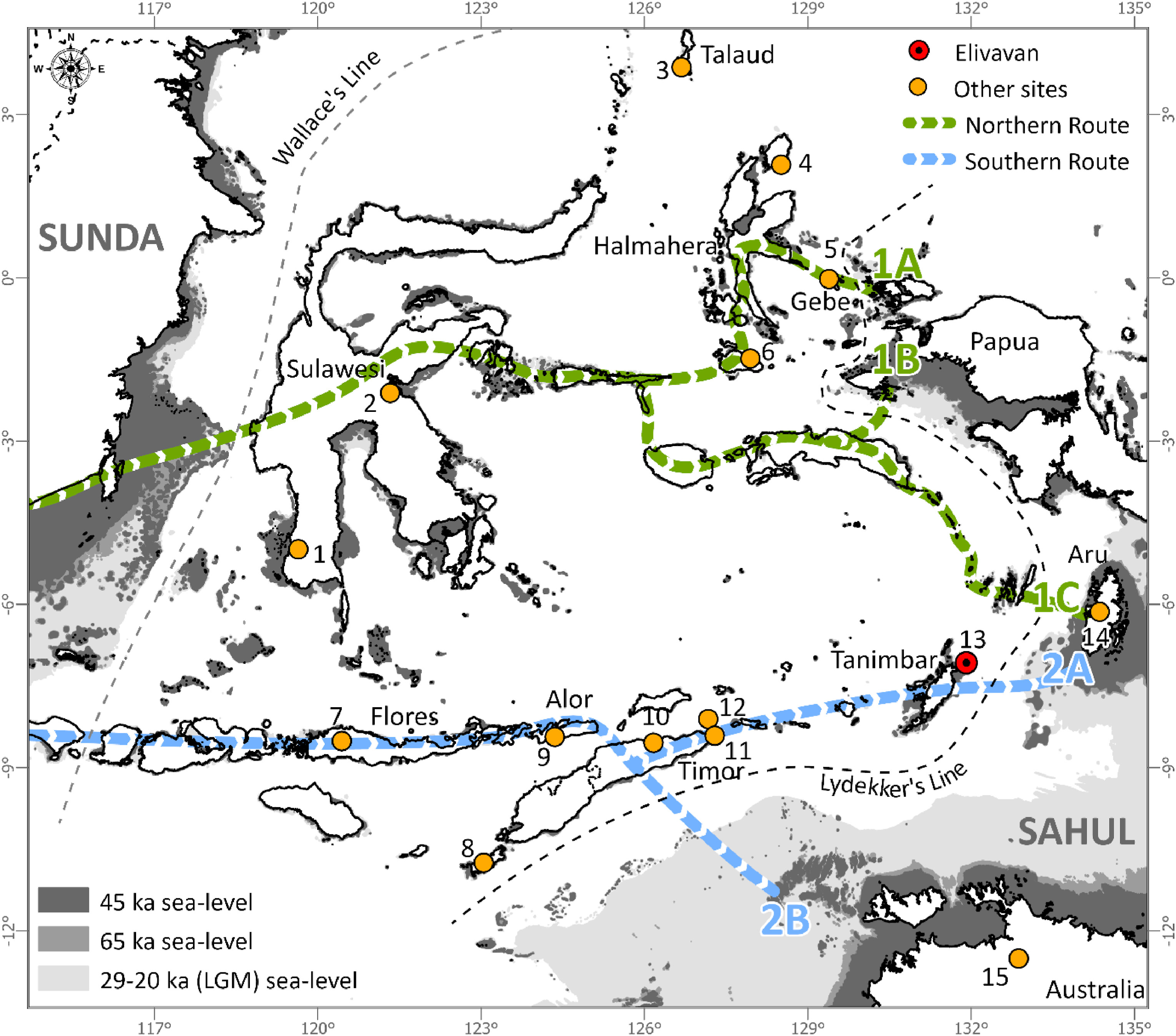Everyone was an immigrant, and over time everyone calling themselves native to an area now stole land from someone else and colonized it. It's impossible to know who were the first to arrive but science can use inference, and new evidence of human occupation in southeast Indonesia dating back 42,000 years provides some idea of the time and the route taken by some of the first humans to arrive in Australia.
The distances are vast and despite ridiculous sailing of papyrus boats into the ocean decades ago, that was not feasible. Shorter trips utilizing land routes make more sense. Tanimbar is an Indonesian island just off the Sahul shelf, which encompasses modern-day Australia, as well as New Guinea. Speculation has long been that migrants took a northern path via islands like Sulawesi and/or a southern track passing near Timor and the Tanimbar islands. The new discovery marks one of the southern route’s earliest known sites.

Inference suggests that due to the limitations of maritime technology until around 42,000 years ago, Elivavan wouldn't have gotten its first inhabitants until then. No one was going 50 miles or more prior to that, it was certain death. Early evidence includes bones, shells, sea urchins and fragments of pottery.
Like all immigration and colonization, the colonization of Sahul was not a single event but “a gradual process involving successive waves of seafaring populations. Coastal communities likely navigated shorelines, exploiting marine resources and establishing resilient settlements along their journey,” says lead author and Australian National University PhD candidate Hendri Kaharudin. “This island-hopping strategy facilitated cultural exchange and adaptation, shaping diverse societies across the land mass.”





Comments